Golden tips for office lighting
Did you know that light affects mood and productivity? Create a happy and active team by knowing the tips of office lighting. Lighting in offices directly affects the well-being of employees. Although it may not seem like it, light fills us with energy and makes us face the workday with more motivation; Therefore, this is an aspect that must be taken into account when designing office environments.
• Why is office lighting so important?
• How to have a bright and bright work space?
• Special lighting for office environments working with monitors
Improving the comfort and productivity of employees is one of the main techniques of any successful business, and the office where the daily activities take place has a great impact on this: if the office environment is a dark and closed place, employees are likely to be reluctant to do their work. They will be more different and vice versa, if the work environment has large windows and plenty of natural light, the employees in that environment will be happier and more involved with their tasks; But why does this happen? In the following, we will seek to find the answer to this question.
Why is office lighting so important?
Sunlight regulates the circadian rhythm of the human body; That is, the production of hormones that inject energy into our body during the day and hormones that relax the body for a good night's sleep.
The change caused by not being exposed to sunlight causes feelings such as fatigue, depression, lack of attention; Therefore, every human body needs a certain amount of natural light during the day to continue producing the right hormones and thus enjoy a better mental state.
Reducing stress, fatigue and nervous tension is one of the effects that sunlight has on the human body. According to research, natural light improves those cognitive abilities that make daily tasks more successful.
Also, one of the main consequences of the lack of light is visual fatigue and headaches with fatigue, which directly affects productivity. Studies have shown that the presence of natural light in offices has a very positive effect on employee productivity and improving their cognitive abilities and relationships. It creates a more intimate and pleasant work.
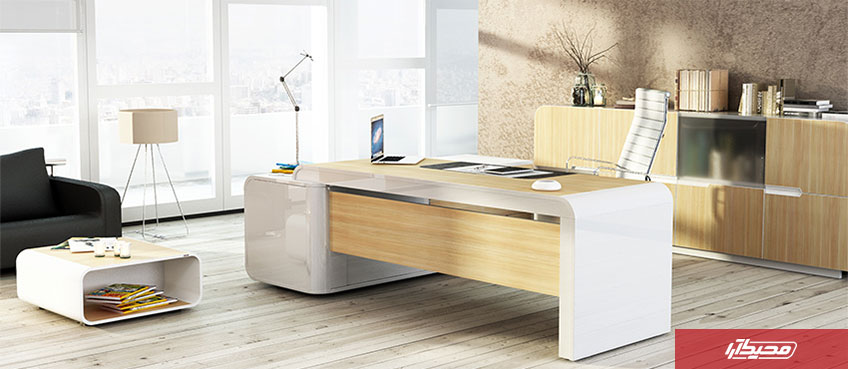
How to have a clear workspace?
For employees to find their offices pleasant, creating a bright space is very important. To achieve this goal, we offer you 11 tips about office lighting.
Use natural light:
If you have a natural light source, make the most of it and place the workstations near the light points. In this way, you have increased the amount of light and you will also save on electricity consumption.
Have almost uniform lighting:
If you want to make corrections in the decoration of the office, think about how you want to distribute the points of light so that no corner is less than a bright corner. Light uniformity is very important in office lighting, because changes in the amount of light have negative effects on people.
Ceiling Lighting:
If you have implemented artificial lighting on the roof of your company, it is recommended to place it on the sides of the workplace so that it hits the environment transversely and is more useful. In addition, the view of the monitor should be parallel to the light sources.
Find the right lamps for your office:
For offices, it is usually recommended to use fluorescent lamps, because they emit less heat. You also need some tubes to light the place well.
Flicker:
Another concept to ensure the health of employees is the standard flickering of the light source. Despite the fact that there is flickering in almost all lights, if this indicator is below 15%, it will prevent dizziness and headaches. In office design, we should look for lamps with flickering below 8% so that it is not harmful to employees.
Lamp color temperature:
The color temperature of light is measured in degrees Kelvin and refers to the spectral characteristic of a color source. The range of color temperature is from 1000 to 10000 degrees Kelvin. The lowest temperature includes red and yellow and the highest temperature includes blue. In response to the question, is warm or cold light more suitable? It should be said that choosing the light temperature of each environment is appropriate to the use of that environment because, as mentioned, light has a great impact on people's mood. In the following, we will examine several colors of light:
Cold white light (5400 to 6500 degrees Kelvin):
This light is suitable for industrial environments and matters where lack of drowsiness is important in those environments. Environments such as carpentry workshops, turning, drawing, etc.
Natural light (4000 degrees Kelvin):
Medium light or bright and natural light is suitable for environments such as schools, kitchens, offices, public environments and hospitals.
Warm white light (2700 to 3000 degrees Kelvin):
This light is suitable for intimate and warm environments because it induces a soft and relaxing feeling. Environments such as reception rooms, bedrooms, patient rooms in hospitals, etc.
In office design, it is recommended to use neutral light for workstations, because it is the most natural light.

Compliance with optical flux:
The luminous flux on a surface is called illuminance and is measured in lux (lumens per square meter). Depending on the activity to be performed in the room, the minimum standards of lighting levels are recommended as follows:
Read or write: 270 lux
Computer room: 323 Lux
Meeting room: 323-540 lux
Closed office: 540 Lux
Open office: 807 Lux
Corridor and stairs: 108 Lux
In general, for office lighting, we recommend reaching 500 lux on the work surface.
Dazzling:
The UGR index (Unified Glare Rating) is an index that shows the glare of the human eye. Factors such as lamp manufacturing technology, position relative to the user and physical characteristics of the environment are involved in this index. It is recommended not to exceed 19 UGR number in the glare index of administrative offices.
Lamp opening angle:
Finally, another key concept to consider is the beam angle of the LED light. This value determines the range that can be lit depending on the distance to the lamp.
In this sense, it is recommended to use lights with a lower opening angle for accent or decorative lighting Accent or decorative and use lights with a wider angle for general lighting in your office.
9. Avoid too much lighting:
The presence of natural or artificial light in offices and business environments is necessary, but excessive use of light, whether natural or artificial, causes employees to feel tired and have headaches, as well as vision problems. So always observe moderation in the use of lighting for the office environment.
10. Install glass partitions:
Let the light circulate freely in the room by installing glass partitions to divide the space. In this way, you can do the distribution you want without losing natural light.
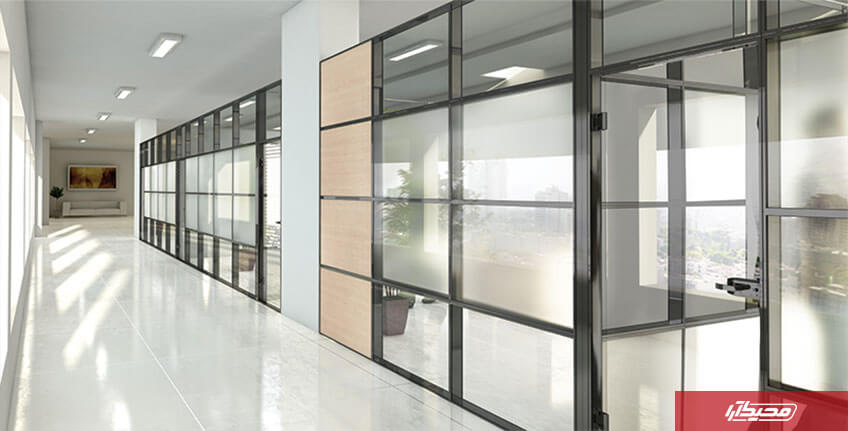
11. Install intelligent control systems:
Today, there are intelligent lighting control systems that help control the use of light. These systems light up only the parts of the space where people work and save energy.
Special lighting for office environments working with monitors
Today, most office jobs are dependent on computers, and many employees spend about 8 hours in front of the monitor and do their duties. In this regard, measures can be taken to prevent the glare of the monitor:
One way to solve this problem is to use a soft light inside specially made lamps that combine indirect and diffused light to produce a light with very low contrast. New technologies in direct and indirect light bulbs, such as microprisms and waveguides, diffusers, have made their light very efficient and glare has been greatly reduced.

FAQ
In office design, it is recommended to use neutral light for workstations, because it is the most natural light.
The lighting of office environments varies depending on the type of work that is done in that environment and the amount of concentration required, but in general, for office lighting, we recommend reaching 500 lux in the environment.
In order to increase the light received, use glass partitions so that the light is not limited in only one office and can circulate in the space. Also, define your workstations as close to the windows as you can and avoid placing spaces such as water closets or less-used rooms next to the main and skylight windows
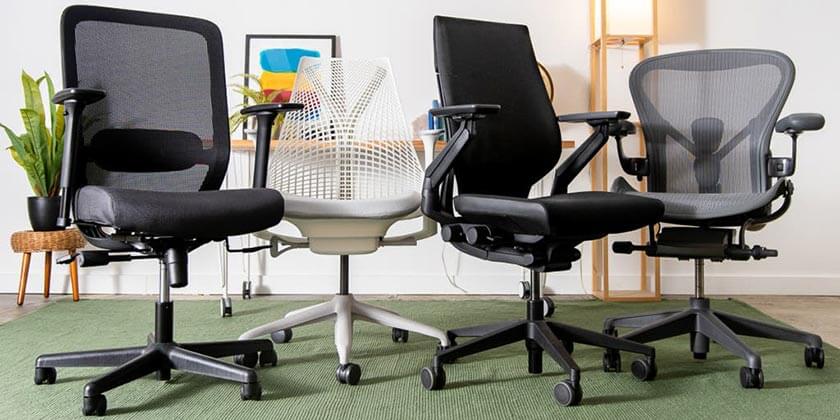

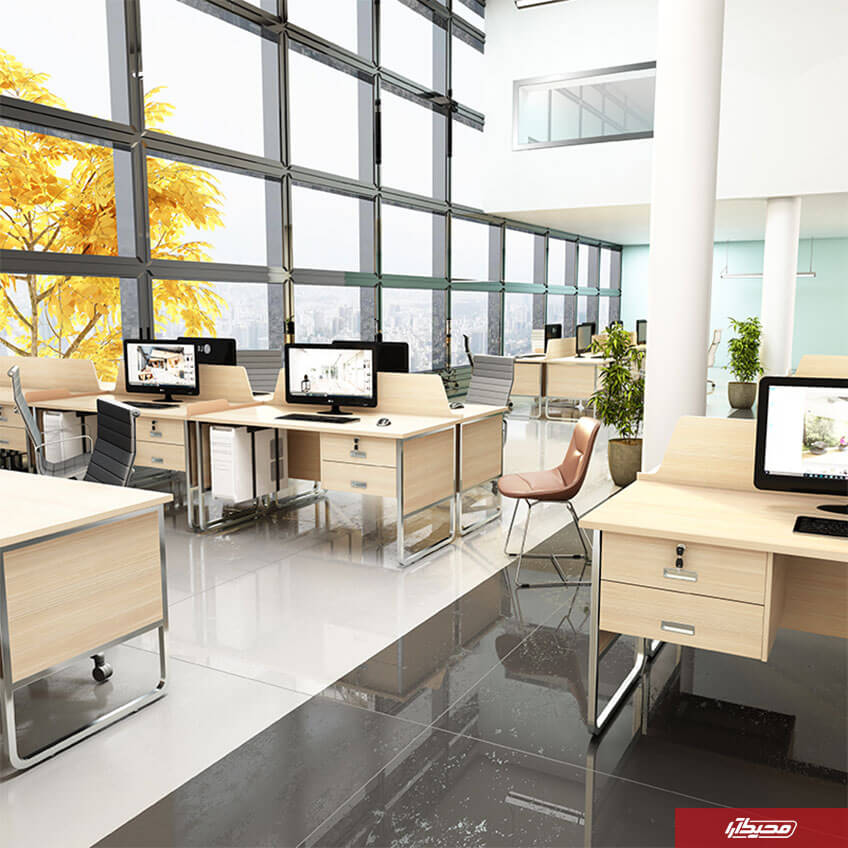
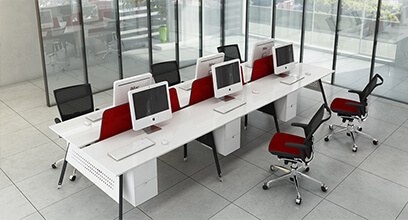


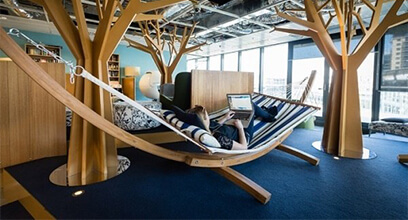
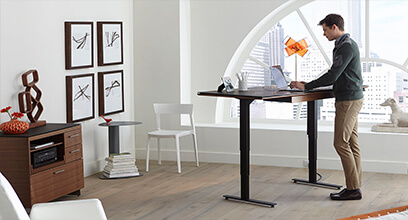
Share